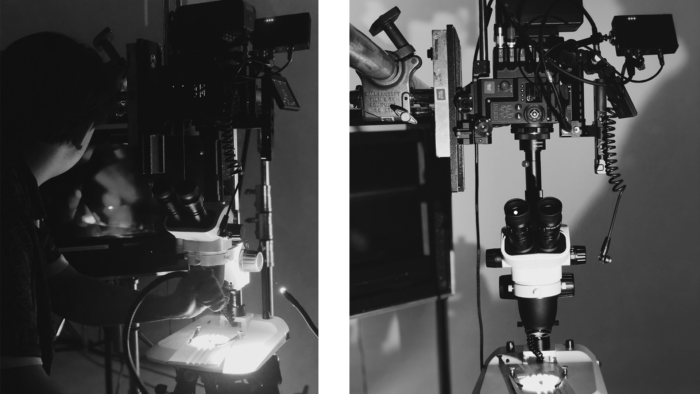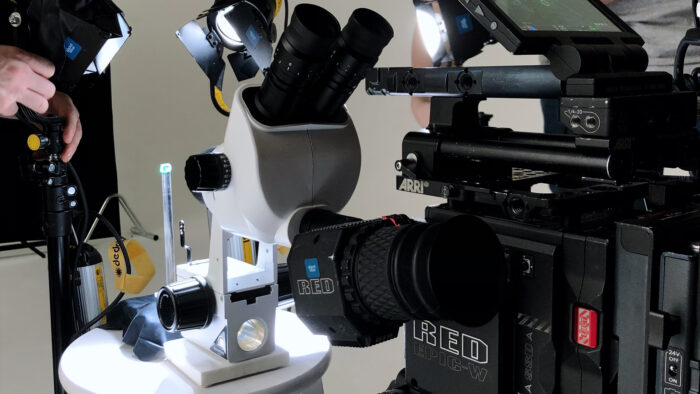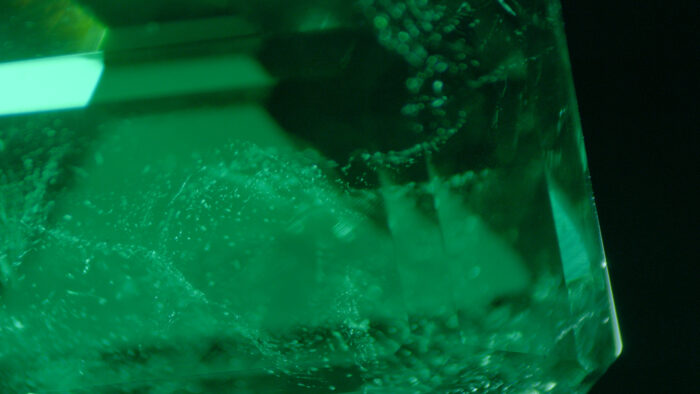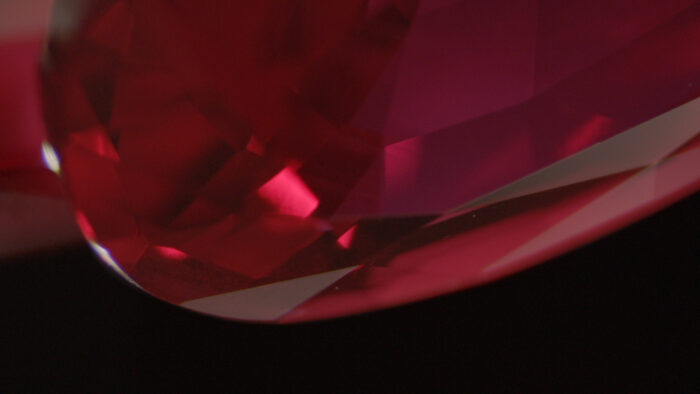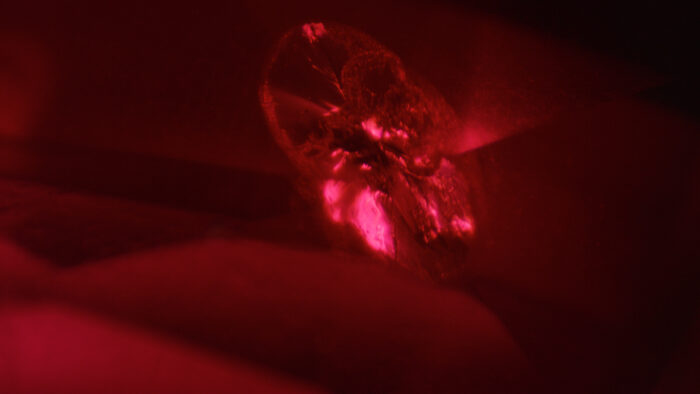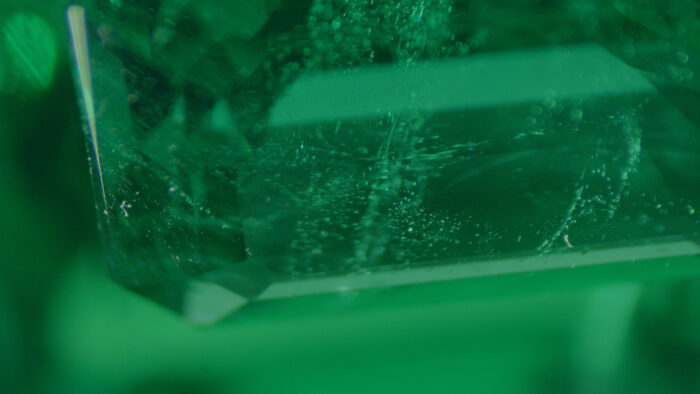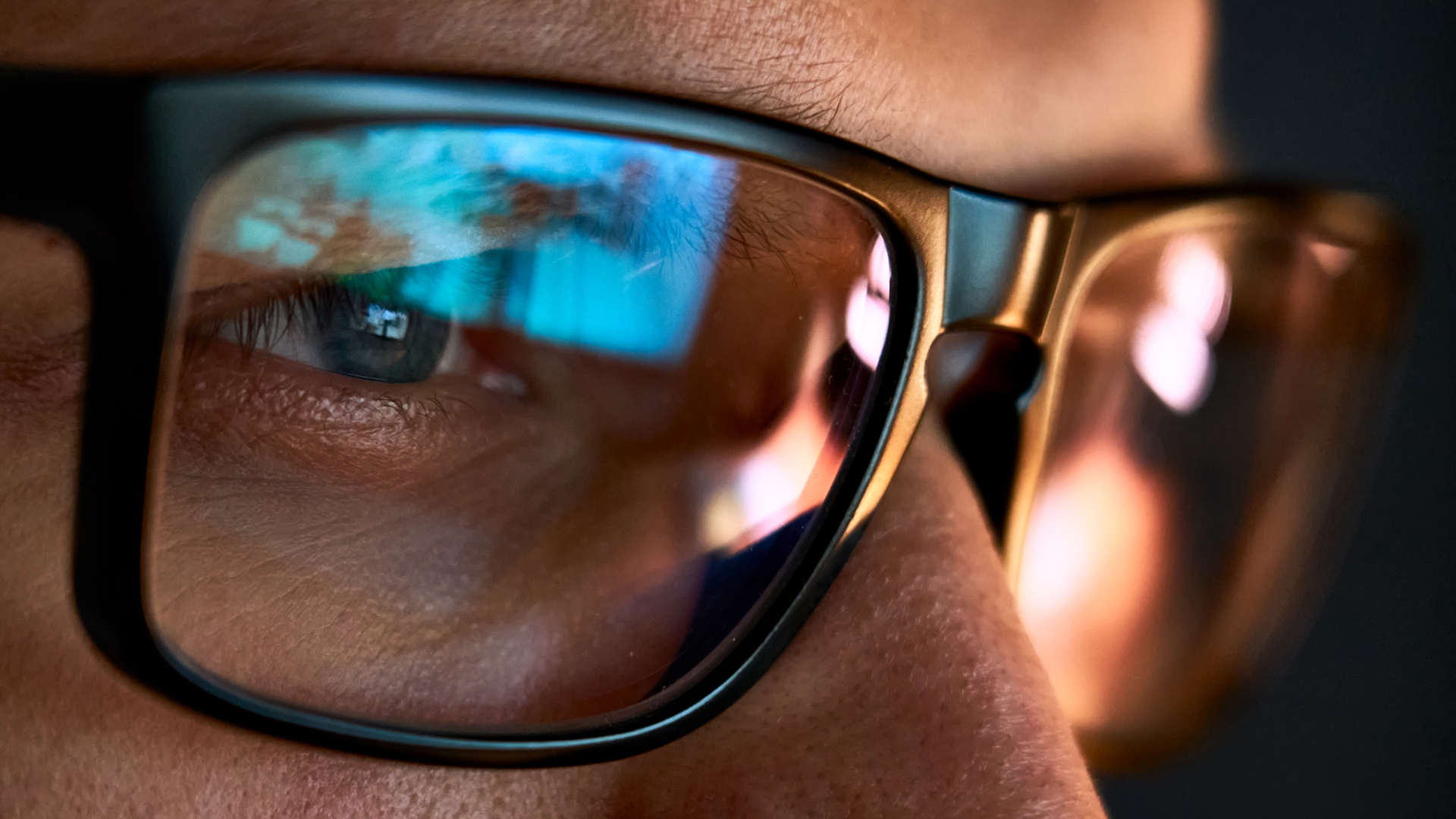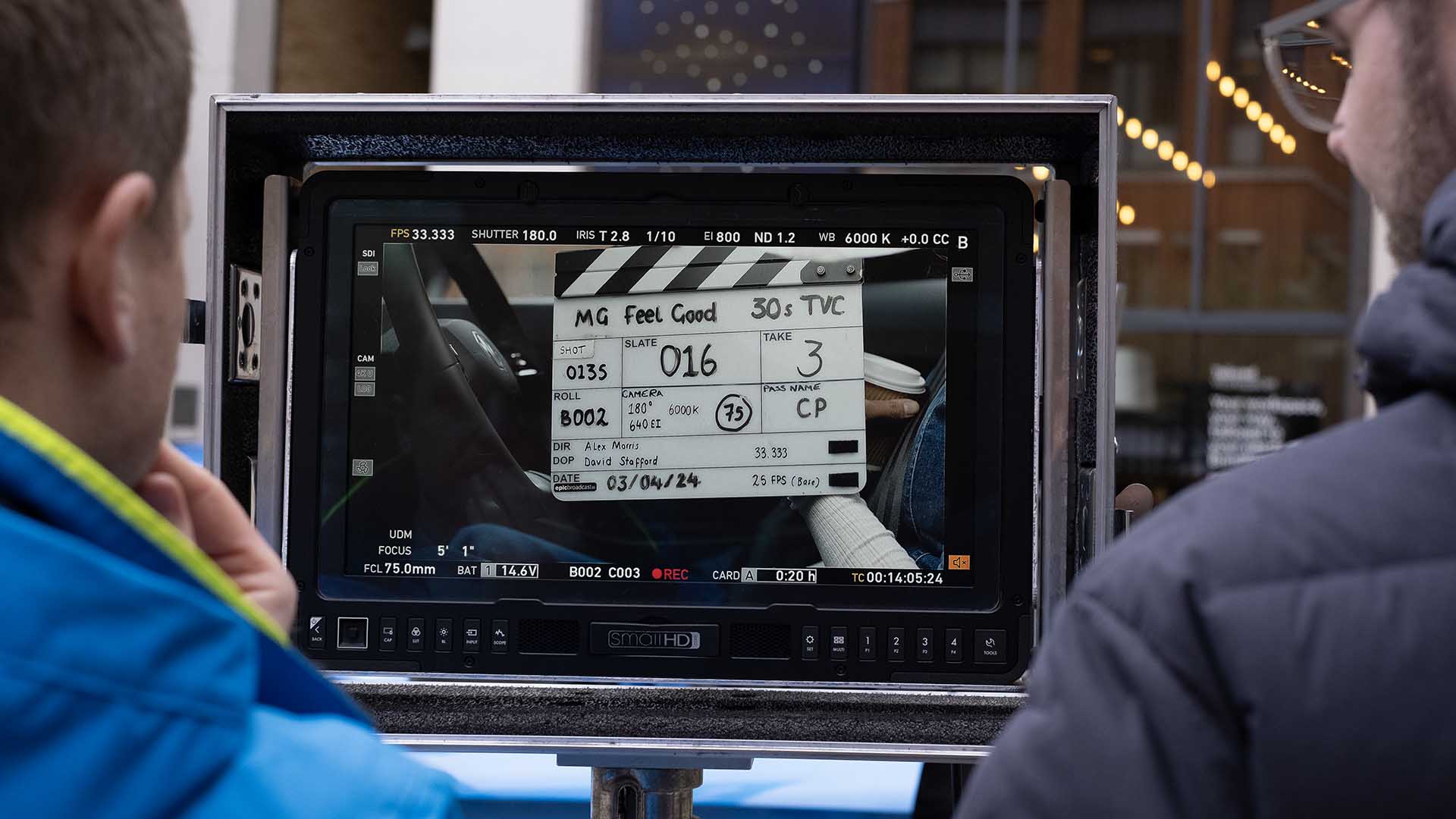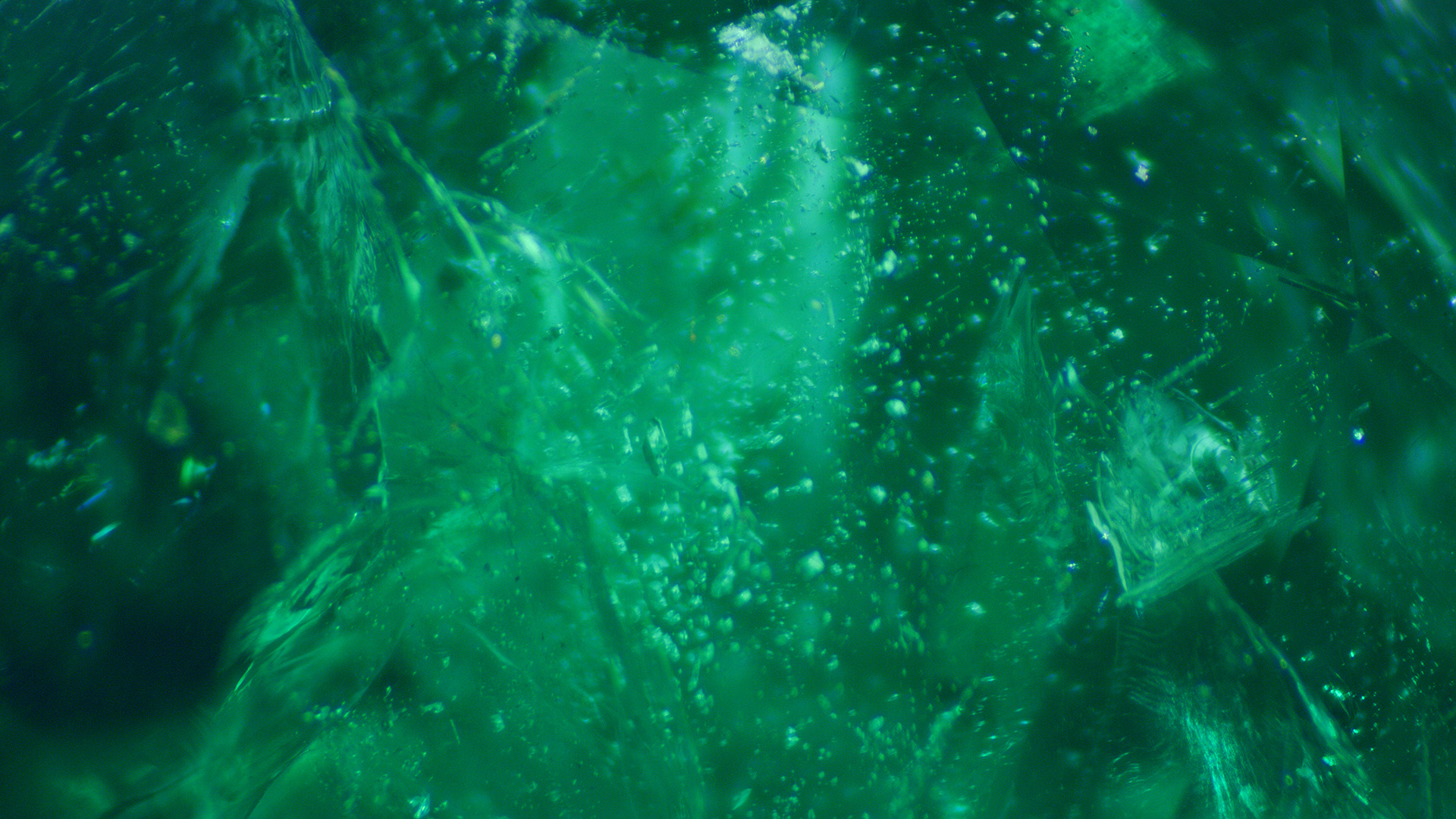
The Invisible World of Gemstones
In a recent pitch, we invited our client to imagine the brutal, and beautiful, microscopic world of mineral formation. To creatively achieve the visual representation of chemical reactions we used liquid art.
To film the cores of real-world minerals, we turned to macro photography.
The Gear
Our weapon of choice was the Red Helium 8K, paired with the ARRI 100mm Master Macro hired from Shoot Blue in London. However, despite an 8k frame, and the sheer might of the Master Macro we still couldn’t get close enough to our tiny gemstone subjects.
Building on the Master Macro, we added a Schnider +3 diopter. However, our immediate discovery was that the ARRI MB20, which housed the diopter, physically prevented us from getting to our closest focus point which was ‘within’ the matte box.
Instead, we stripped the matte-box back to a custom build, and just used the elements needed to mount the diopter. We were finally able to get close enough to the gemstones for full-frame visuals.
Going Micro
Whilst achieving the macro photography was a great start, we knew we wanted to get closer still. We’d had the idea of mounting the RED on a microscope to achieve, in a sense, micro photography.
We found the Euromex NexiusZoom EVO Microscope, that included a C-mount on the lens column. One of the biggest issues was finding a way to attach the RED…
We knew that we could switch the PL mount on the RED to EF. We then sourced a C-mount to EF adapter, to connect the RED and microscope together. The downside was that the adapter was roughly 3” long, and narrow, and the single most vulnerable point of failure should anything happen.
Focusing the microscope was done by physically raising and lowering the lens on the column to the rear of the apparatus. Unfortunately, by mounting the RED at the rear, we’d be adding too much weight for the rear column to support.
Our work around was to lay the microscope flat in order, mimicking a traditional camera lens, plus the mother of all lens supports. We then achieved focus by repositioning the gemstone on a custom built acrylic plinth.
For the required overhead shots of the gemstones we mounted the RED to an overhead goal post rig. A Miller tripod supported the microscope to reduce strain on the fragile lens mount.
Finally, for our lighting we used a fixed aperture in the ballpark of T22. This was achieved with a few Dedolight DLED7s, all soft-boxed up, for a hazy, directionless base level that we were able to control with ease. Our key source came from a F1 LED Light Source, daylight balanced and with a gooseneck. To achieve sharp, powerful beams to cut across through the surface of the stones and illuminate the facets and inclusions from within, we modelled our own snood out of gaff and black wrap which enabled us to have pinpoint accuracy in our movement.


